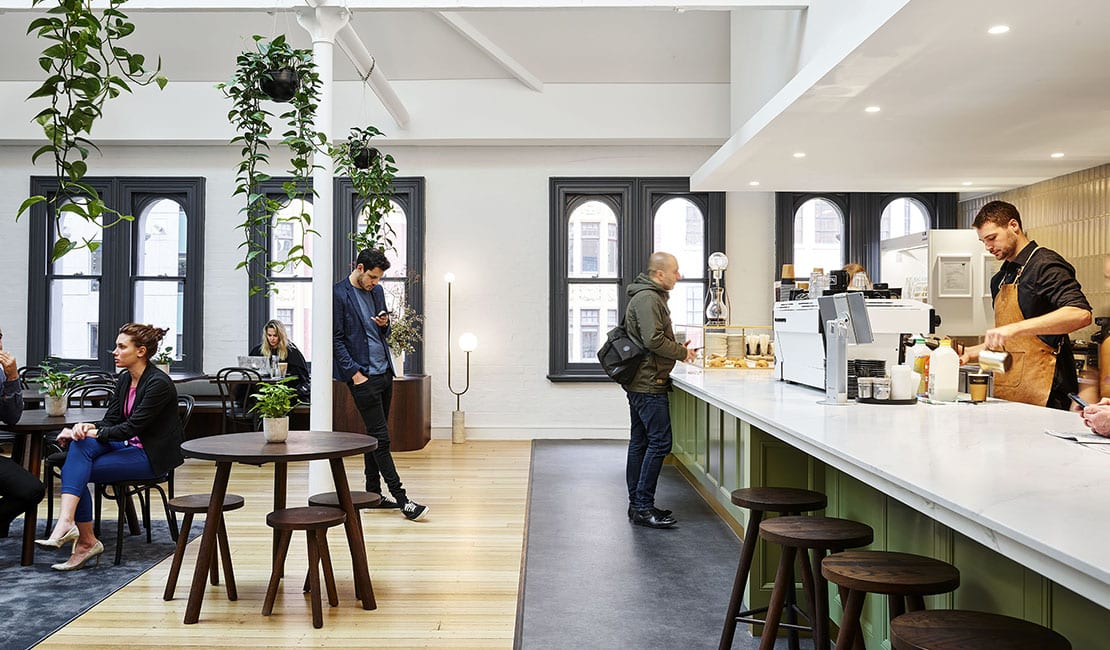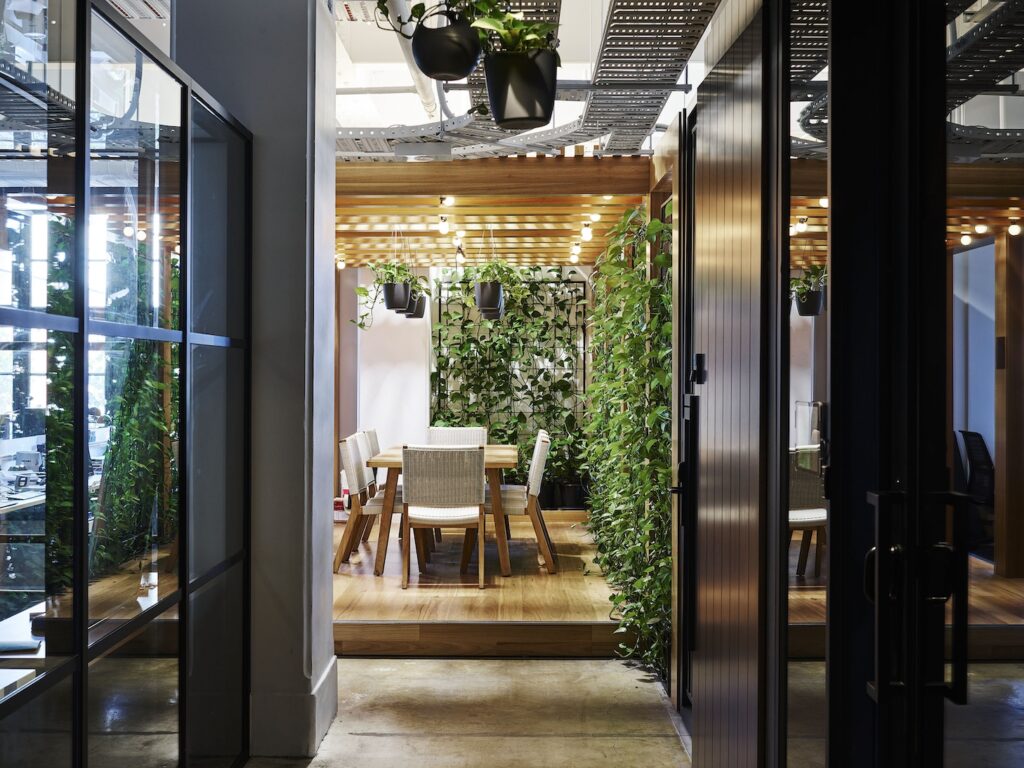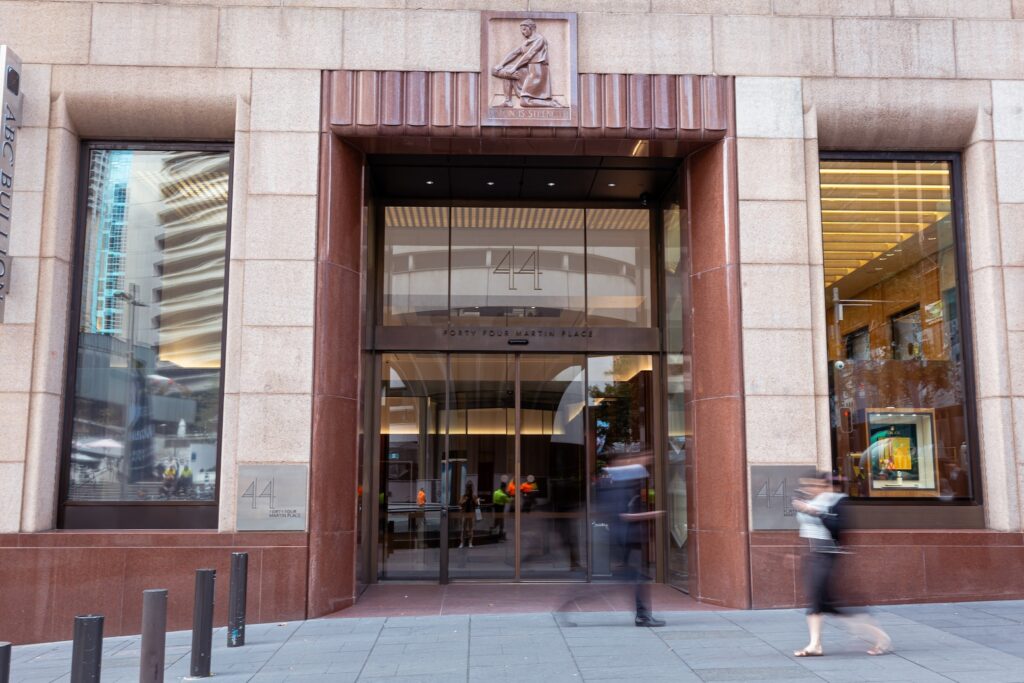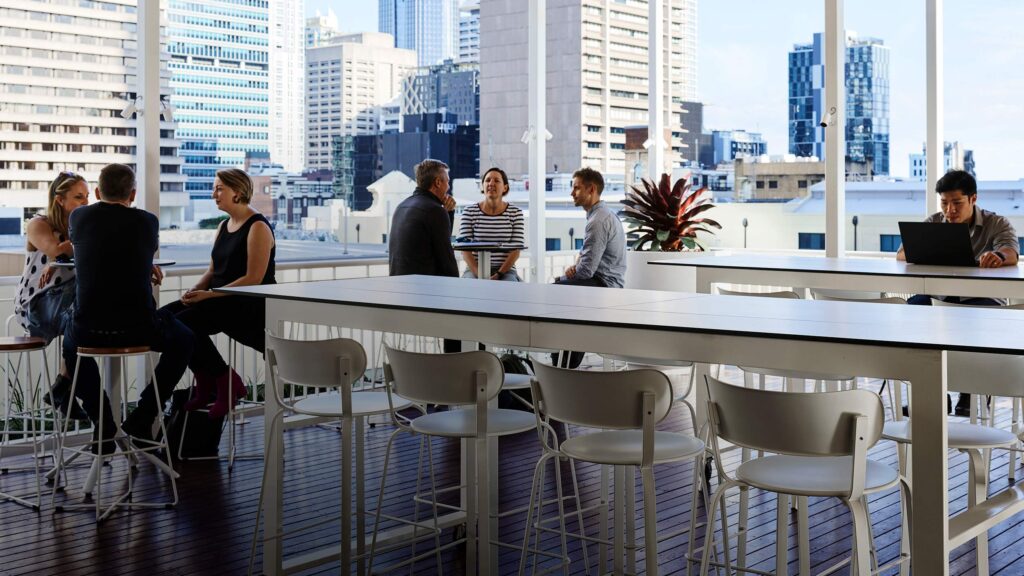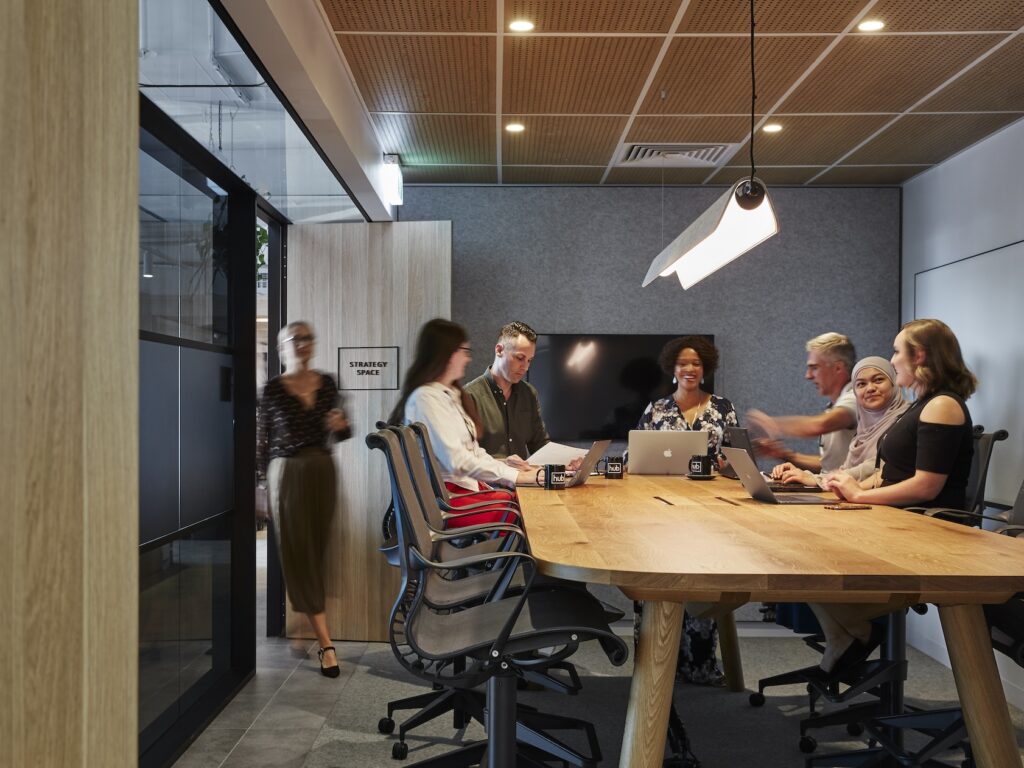With an estimated 35,000 spaces across the world, coworking and flexible workspaces have proven they’re much more than a passing fad.
Worldwide, the number of coworking spaces is expected to grow at an annual rate of 13% by 2022.
For Brad Krauskopf, CEO and founder of Hub Australia, the industry has plenty to look forward to this year, as the traditional office experience continues to evolve.
“Coworking has evolved from origins servicing the needs of start-ups or freelancers, becoming a go-to choice for companies of all sizes, particularly five- to 50-person teams.” – Brad Krauskopf
Flexible working has come a long way from the early days of the industry, with mandatory hot-desks and ping pong being swapped out for many businesses with premium experiences and facilities.
“In Hub’s case, members receive an everyday work experience similar to a premium hotel.” – Brad Krauskopf
With changing expectations from customers and members, coworking and flexible workspace environments have needed to learn and evolve quickly.
The traditional office experience will only continue to evolve throughout the year.
Top 5 coworking trends set to emerge and grow in 2020:
1. Increased uptake and continued use by corporates
Corporate institutions, such as finance, insurance, banking, and more traditional industries, have already adopted coworking and flexible office spaces for their teams in a big way. This is set to continue into 2020 as more larger corporates identify the benefits of flexible space to accommodate project and temporary teams, head-office renovations, or overflow space.
Hub Australia is already home to a number of these teams, and they overwhelmingly find the flexibility to be a great business asset.
With changed accounting standards requiring all office leases to appear on the balance sheet, the adoption of workspace-as-a-service offerings from flexible workspace providers (that appear as operating expenses), will further expand to become part of the office solution for more corporate/ government organisations.
2. Hospitality-focused design for staff attraction and wellness
The design of coworking spaces will increasingly be tailored to suit the lifestyles of the Gen Y and Gen Z workforces, with a focus on helping businesses attract and retain staff.
Many Hub Australia members already emphasise the benefits of flexible work and the diverse features coworking spaces offer their teams.
It is also likely that operators will continue to follow industry leaders like Hub Australia to increase hospitality offerings, including options like cafés, restaurants, and bars in workspaces.
3. Joint-venture partnerships between landlords and established operators
Now that the WeWork bubble has burst, the dust has settled, and the demand for quality flexible workspace continues to grow, operators and landlords will be working out the best way to optimise risk and return for all parties.
The traditional lease is likely to make way for hybrid leases, management agreements, and fee-for-service models – allowing landlords to participate in the greater yields of flexible space while retaining relationships with customers.
Hub Australia is working with multiple REITs and property owners to customise and operate flexible workspace management to suit their needs.
4. Going green
In 2020, more coworking companies will make the move to committing to sustainable workplaces, as energy-efficient measures become an increasing priority to members.
Creating an environmentally friendly workspace has positive benefits to employee culture and business sentiment, as well as being an important step towards protecting our planet.
Hub Australia is on track to become one of the first certified carbon-neutral coworking spaces in the world by mid-2020.
5. Increased use of tech to meet members’ needs
In 2020, it’s time to begin actively observing the changing attitudes of how people want to work.
Coworking providers need to think about creating bespoke and curated spaces that cater to a variety of different needs, beginning by collecting data on demands and optimisation, and looking into new technologies that can simplify and enhance the day-to-day experiences of members.
